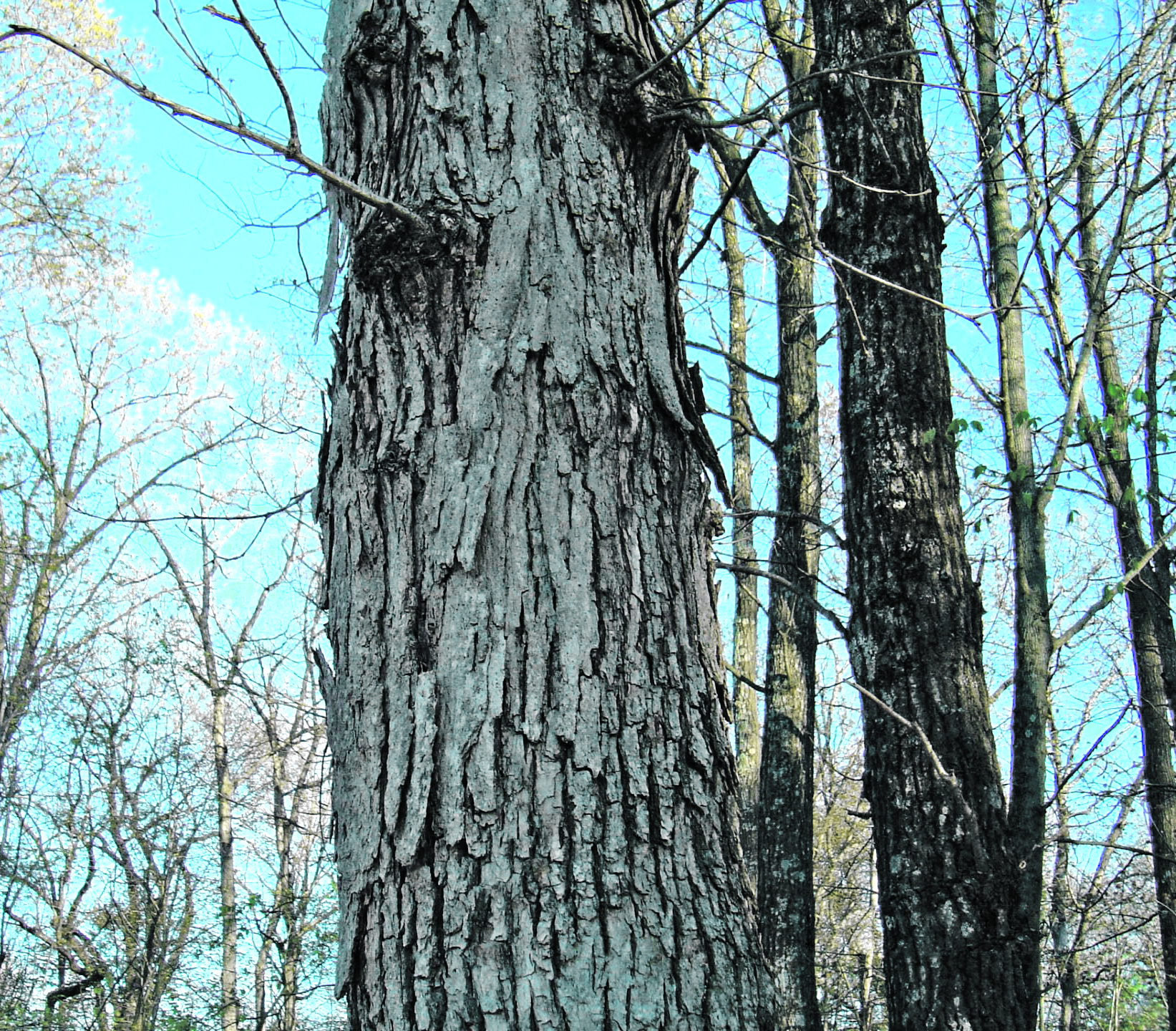Features of Trees Useful for Identification
Learning to identify the trees on your property will help you enjoy and better manage your land.
Woodland owners who learn how to identify the trees and other vegetation on their property are better able to enjoy their land, and will make more informed decisions about their management actions. The terminology associated with dendrology, the study of trees, can be overwhelming. The starting point is to know the diagnostic features, and the ways those features might vary within and among tree species. Some, but not all, features that are reliable for the differentiation among species are presented here, as well as some common terms that are used in tree identification books. Make sure your book has a good glossary.
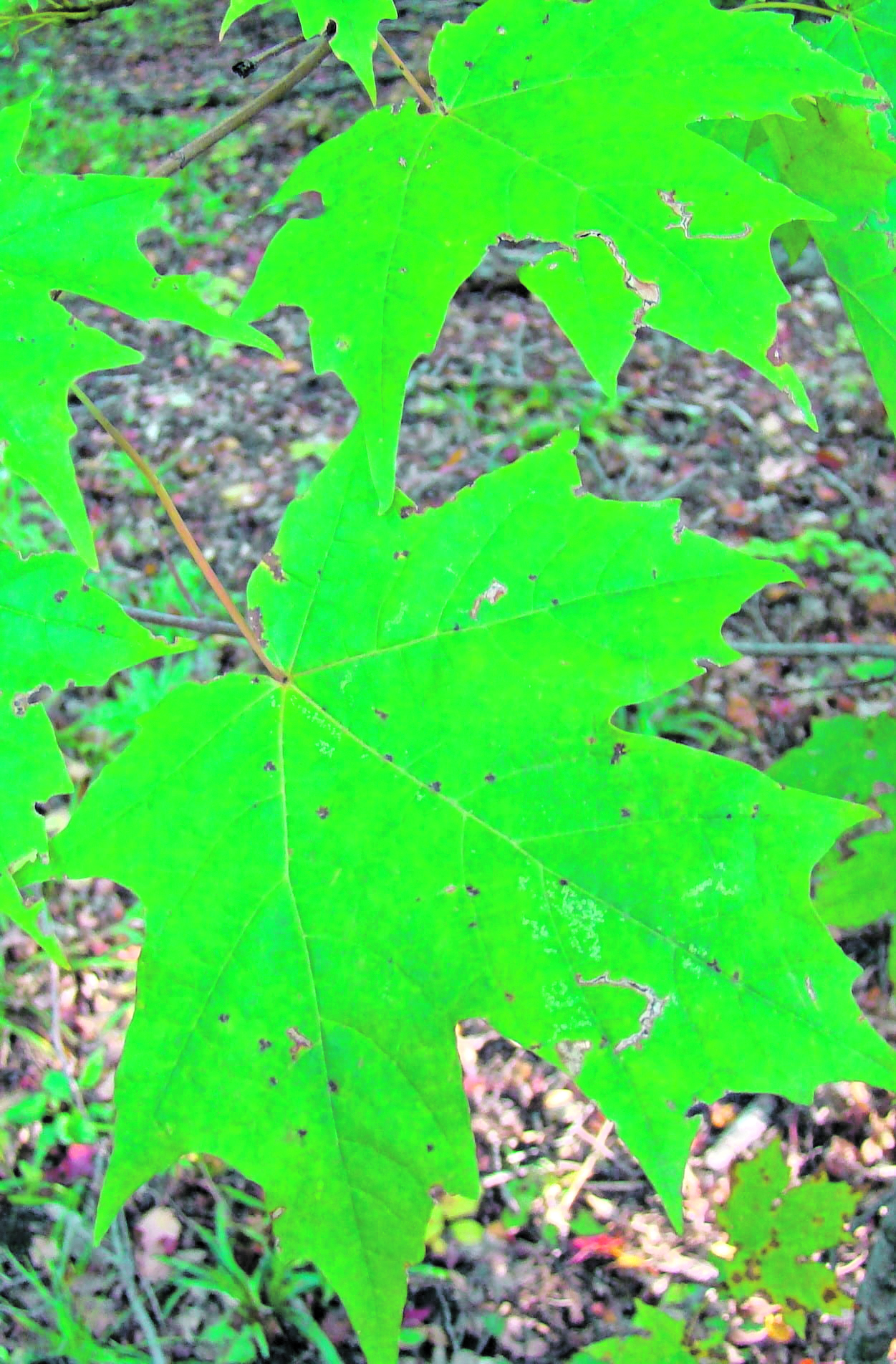
A sugar maple leaf has a smooth margin.
Following are features of trees and shrubs that provide the greatest clarity in identification. A challenge is to recognize how these features differ between species (Figure 1), and how these vary within a species. Within a species, one prominent cause of variation is tree age, which influences many of the features. For example, bark on young trees is often smooth, although as trees age the bark at the base of the stem is first to acquire the characteristics typical of a mature tree. Tree vigor, as a result of soil, sunlight, or past disturbances can influence some tree features. Tree genetics can also cause variation of a feature. Most tree guides will describe the variation of features that might be attributable to genetics. Finally, while there may be some differences of a feature on any particular specimen (a specimen is the particular tree or shrub you’re inspecting), be sure to see as much of the specimen as possible and use the most common manifestation of a feature.
Recognizing variability is important, but so is knowing what won’t vary. Features that are basically constant for a species include the edge of a leaf (the margin), the arrangement of buds and leaves as opposite or alternate, anatomical structures such as thorns or pith (the inner spongey core of a twig), the type of fruit such as nut versus berry, and the position of fruit on stalks or along twigs.
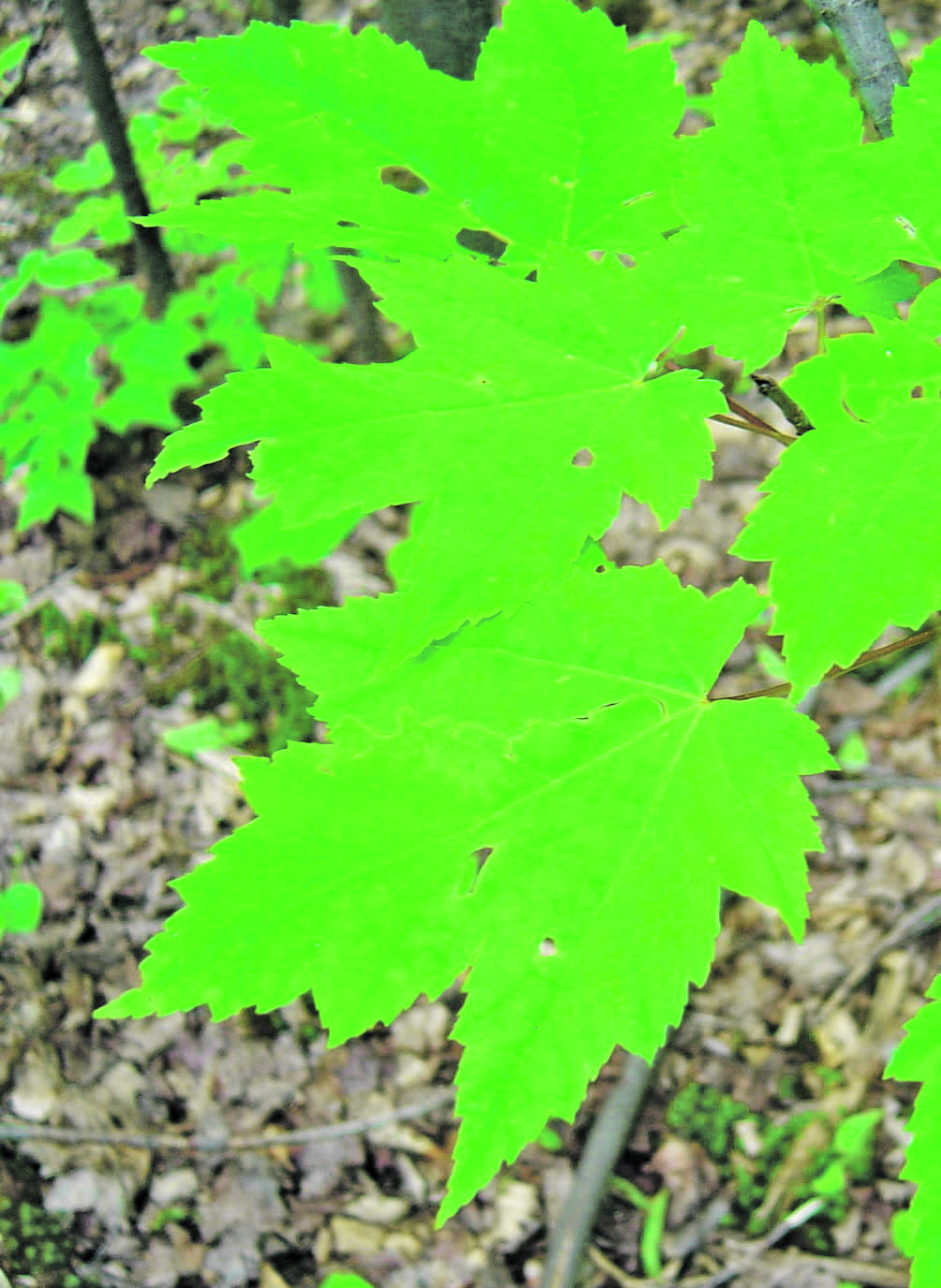
Red (pictured) and sugar maple have similar looking leaves, although red has a toothed margin.
There are advantages and disadvantages to using any one feature, but all are potentially useful. For example, twigs usually differentiate between species given differences in twig color, diameter, bud features, smell, and straightness. However, for about a month in the spring as the new twigs emerge, their typical characteristics are obscured. Similarly, the bark on mature trees is often fully diagnostic to separate among species, and this is the common way that foresters identify trees. However, young trees have bark that is usually quite different from the bark of that species on more mature trees. Thus, there is not one single feature that is always useful; the correct feature depends on the situation.
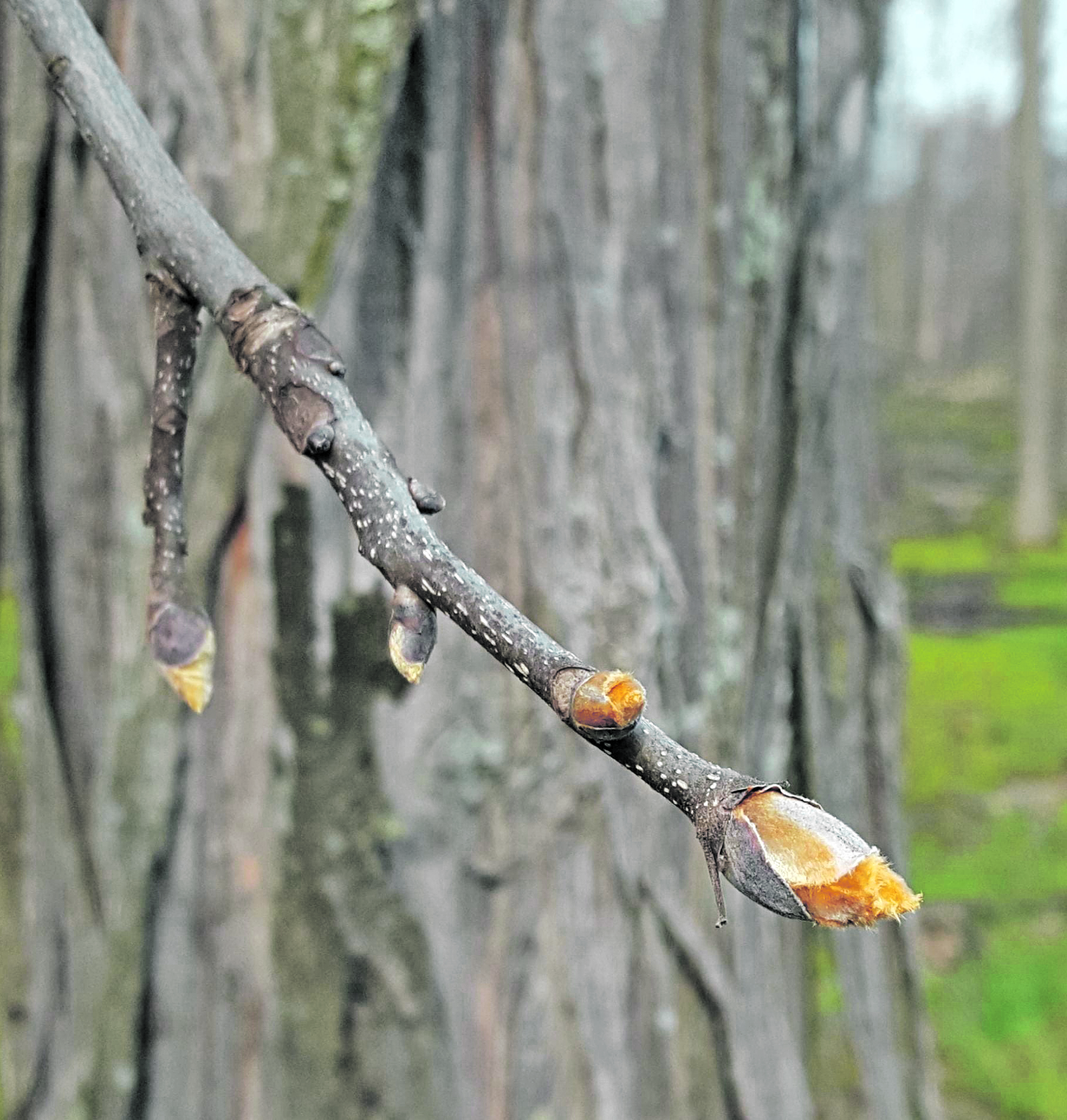
Figure 2: Hickory is an example of a genus that has alternate bud and leaf arrangement. Note also the overlapping or imbricate bud scales.
Arrangement – One of the most useful features to identify trees, at least to sort hardwoods into two broad categories, is whether the buds are paired on the stem, known as “opposite” arrangement, or if the buds are unpaired, known as “alternate,” in their position along the twig. (Figure 2). Because twigs emerge from buds, twig arrangement is often consistent with bud arrangement. Although bud arrangement is almost always invariant, trees with opposite branches might lose an occasional branch and give the appearance at quick glance to be alternate. Another uncommon arrangement, whorled, has three leaves at one point on the twig. Whorled arrangement occurs on northern catalpa (Catalpa speciosa) and the wetland shrub buttonbush (Cephalanthus occidentalis), the later can be either opposite or whorled with three or four leaves.
Foliage – Foliage is the most apparent feature, but in hardwoods is the feature with the most variability in size, shape and outline. In fact, first year seedlings can have foliage features that are remarkably different than even second year or older seedlings. Conifer foliage, the needles, tend to be consistent in size and shape. Size and shape of hardwood leaves can vary as a result of the amount of sunlight, drought and defoliation, or other factors. Outline or leaf shape is often similar among several species, and can be useful, though not always definitive. Other features of foliage are more useful. The arrangement of the foliage follows the buds, as previously described.
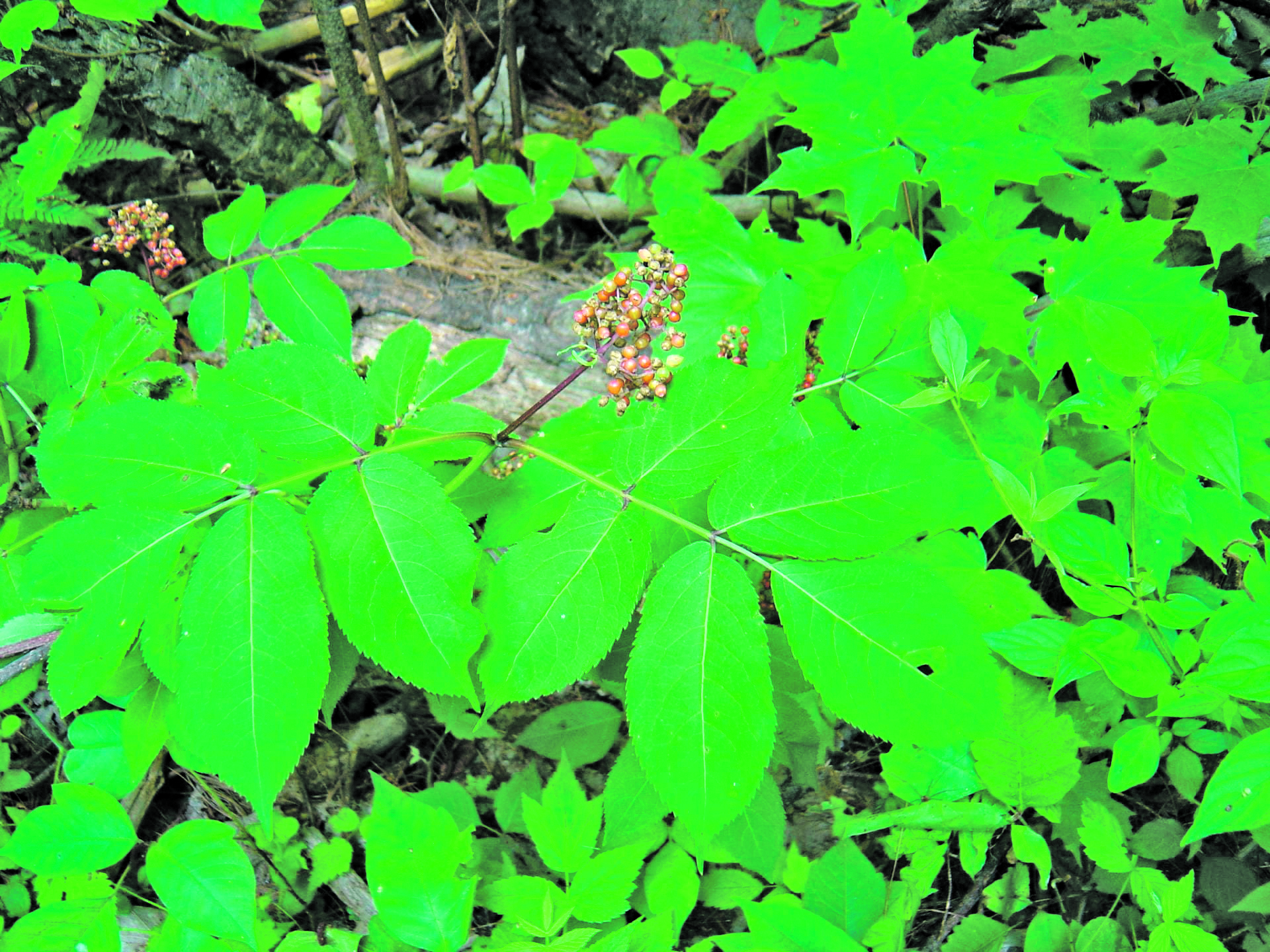
Figure 3: Compound leaves have multiple leaflets. On this elderberry, each leaf has five leaflets, and note the leaves are opposite. The elderberries are attached.
There are several features of foliage that warrant attention because they lack variability. The leaf type describes either a simple or compound leaf (Figure 3). A simple leaf has a single blade and the stalk, known as the petiole, connecting the blade to the twig. A compound leaf has multiple leaflets, which are blades attached to a central stalk known as a rachis that attaches to the twig. In some species a leaflet looks like a leaf, except that there is a bud on the twig where the leaf connects. There is never a bud where the leaflet attaches to the rachis. The edge of the leaf is called the margin. A leaf (or leaflet) margin is invariant within a species. The common margin types include smooth (known as “entire”), “serrate” or saw tooth-like, and some variation of crenate or dentate (rounded or toothed). Entire margins are usually entire; there is not much variation. Serrate might be singly serrate, such as elm, or doubly serrate, such as all species of the birch family. Crenate and dentate can be coarse, small, sharp, etc. for example bigtooth aspen (Populus grandidentata).
A final feature of hardwood foliage to consider is how the leaves and leaflets are attached. Leaves are attached to the twig with a petiole, and leaflets are attached to the rachis with a petiolule. The petiole is usually round, but in the aspen/poplar genus is flattened. Most petioles are a simple unremarkable connection, but in American sycamore (Platanus occidentalis) will enclose the bud, or the base of the petiole may encircle the twig in other species. The petiolule is either present, known as stalked, or absent in which case the leaflet is sessile or connects directly to the rachis. Similarly, the scar that is left after the leaf drops is diagnostic for some species.
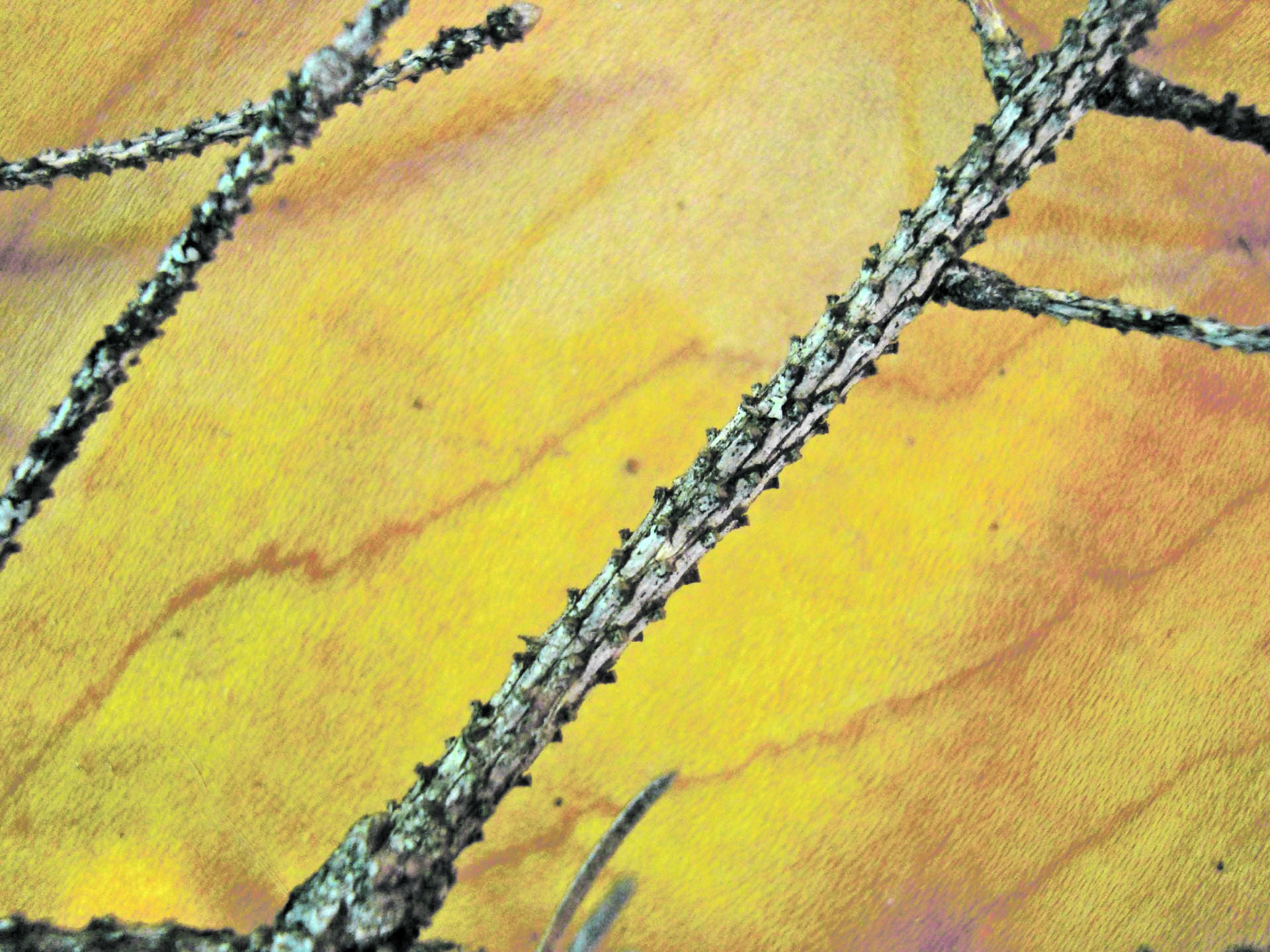
Figure 4: Only the spruce have peg-like projections called sterigmata that connect the single needle to the twig.
Conifer foliage differentiates among species based on needle length, form/shape, nature of attachment, and aroma. Pines (genus Pinus) are recognized by clusters of foliage. Each cluster is called a fascicle, and the number of needles per fascicle usually differentiate species. Spruce (genus Picea) are recognized by single needles that are square in cross-section and attached to the twig with a stalk known as a sterigmata (Figure 4). Fir (genus Abies) have flattened needles that are attached to the twig without a stalk but rather a circular pad, and have some variation of a citrus-like aroma when crushed. The fir needles are often attached on the horizontal sides of the twig, and then known as “two-ranked.” Hemlock (genus Tsuga) have flattened needles with a stalk, but the stalk does not persist on the twig. Also the needles attached to the top of the twig are often smaller and inverted.
Twigs – Except for about a month in the spring, twigs can be used to differentiate among almost all species of trees. Some species of birch and hickory can be a challenge to separate. Also, in the woods, the twigs may be in the canopy and not accessible. The first feature of a twig to inspect is the arrangement of buds and leaves as either opposite or alternate. The next feature is to inspect the outer layer of the buds. Some buds have overlapping scales, called “imbricate.” Other buds have scales that are valvate. Finally, some buds lack scales and are called “naked.” Other diagnostic twig features include color, stoutness, straight vs. zig-zag, lenticels, and stipule scars.
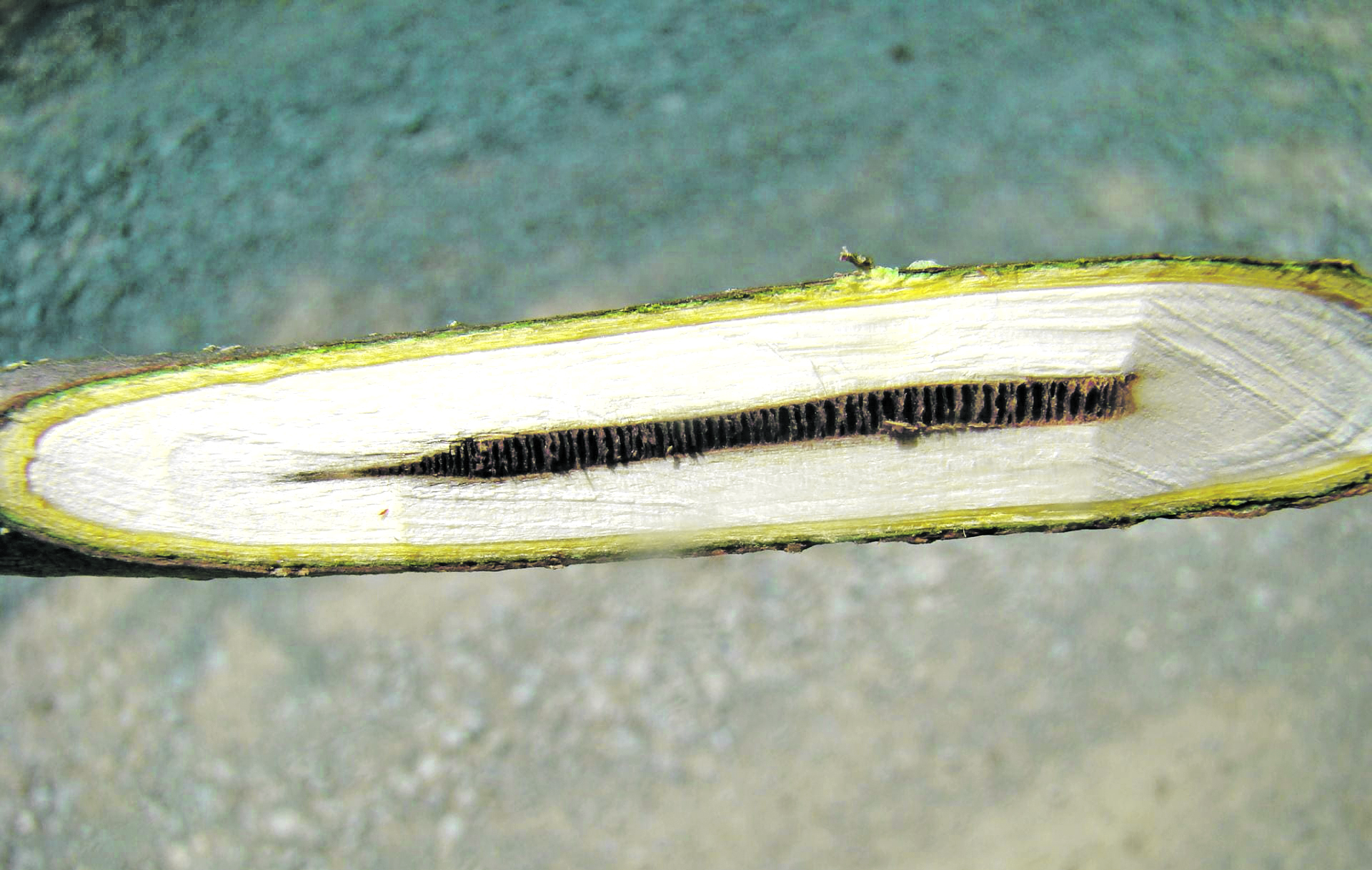
Figure 5: Butternut (pictured) and black walnut have chambered piths. In butternut it is a dark-colored pith. In black walnut the pith is light-colored.
Other features of twigs may include the presence of an aroma (e.g., yellow birch, cherry) or the construction of the pith. The pith is the spongey center of the twig and can have one of three types of construction: homogeneous, is solid and is most common; diaphragmed piths are solid with cross-longitudinal separations that create small filled cavities; chambered are hollow with cross-longitudinal separations that create small empty cavities (Figure 5).
Fruit – There are several types of fruit. Because fruits originate from flowers, and flowers are the definitive feature for identification of species, the fruit can be especially beneficial for identification. However, fruits are often in the crown, dispersed on the ground from an unknown specimen, partially decomposed in the leaf litter, or eaten by wildlife. There are several common fruit types described below, about half as many as exist among all trees. The common fruit types include:
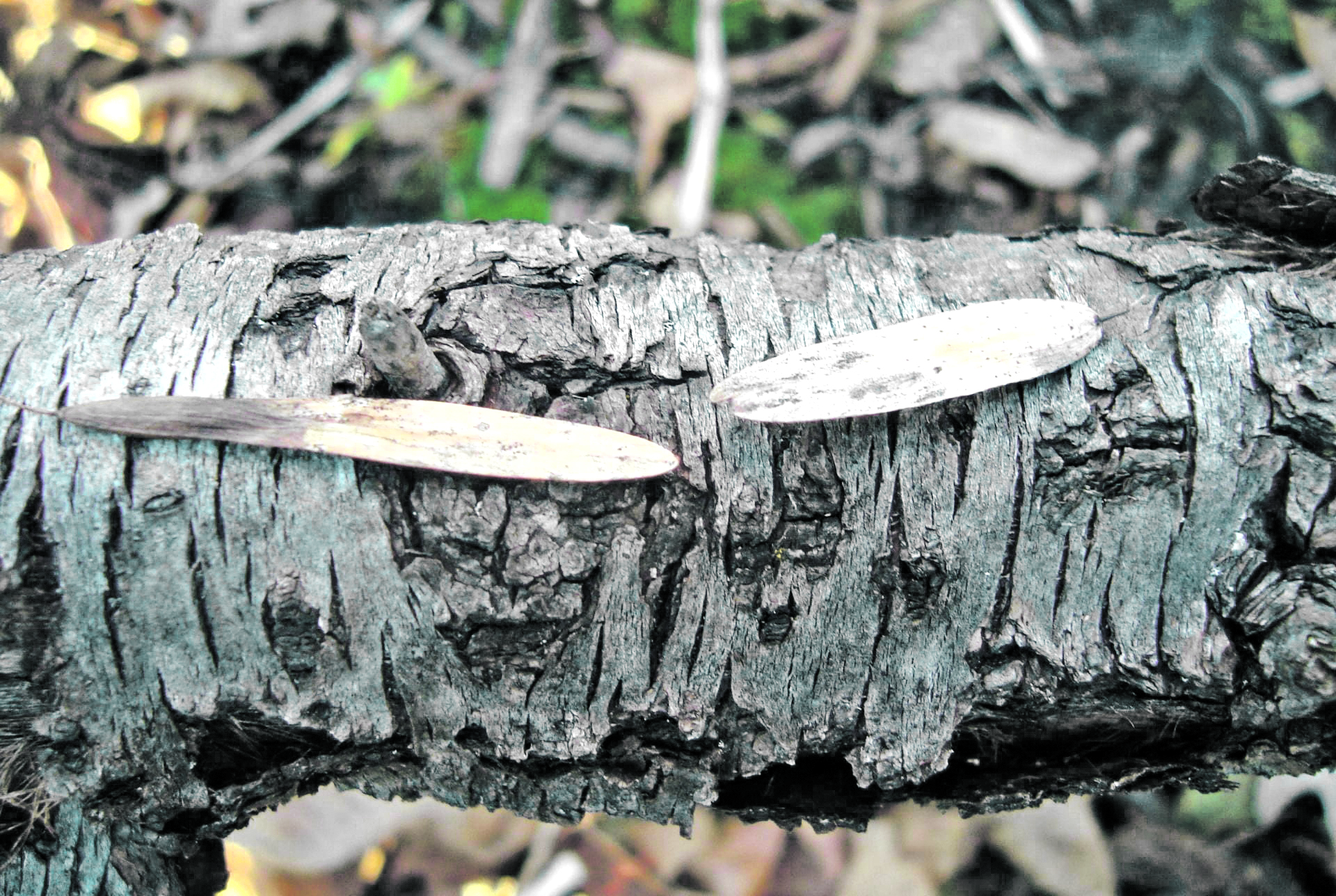
Figure 6: Green (left) and black (right) ash samaras are of different size and shape. The percentage of the wing that covers the seed helps distinguish green and white ash.
- Berry – a fleshy and pulpy fruit with multiple seeds (e.g., pawpaw). The shell of the berry lacks seams or sutures.
- Nut – a dry single-seeded fruit. The nut itself lacks seams (e.g., acorns), but there may be a husk that has seams (e.g., hickory).
- Samara – fruit that is a combination of the seed and a wing. Maples have paired samara that you knew as “helicopters.” Ash also have samara as a fruit, where size and shape help distinguish species (Figure 6).
- Cone – the fruit of the conifers, comprising a central axis and scales. The number of scales, length of cone, shape of the scales, scale margin, scale thickness, and persistence of the scales help to differentiate species. The fruit of the cedar family is not a cone in the traditional use of the word.
Bark – Bark is the most commonly used feature of trees for identification by people who work in the woods. As a reminder, the bark of young or immature trees is often quite different from mature trees. There are several types or structures of bark, each having differences to help sort among species. These types include:
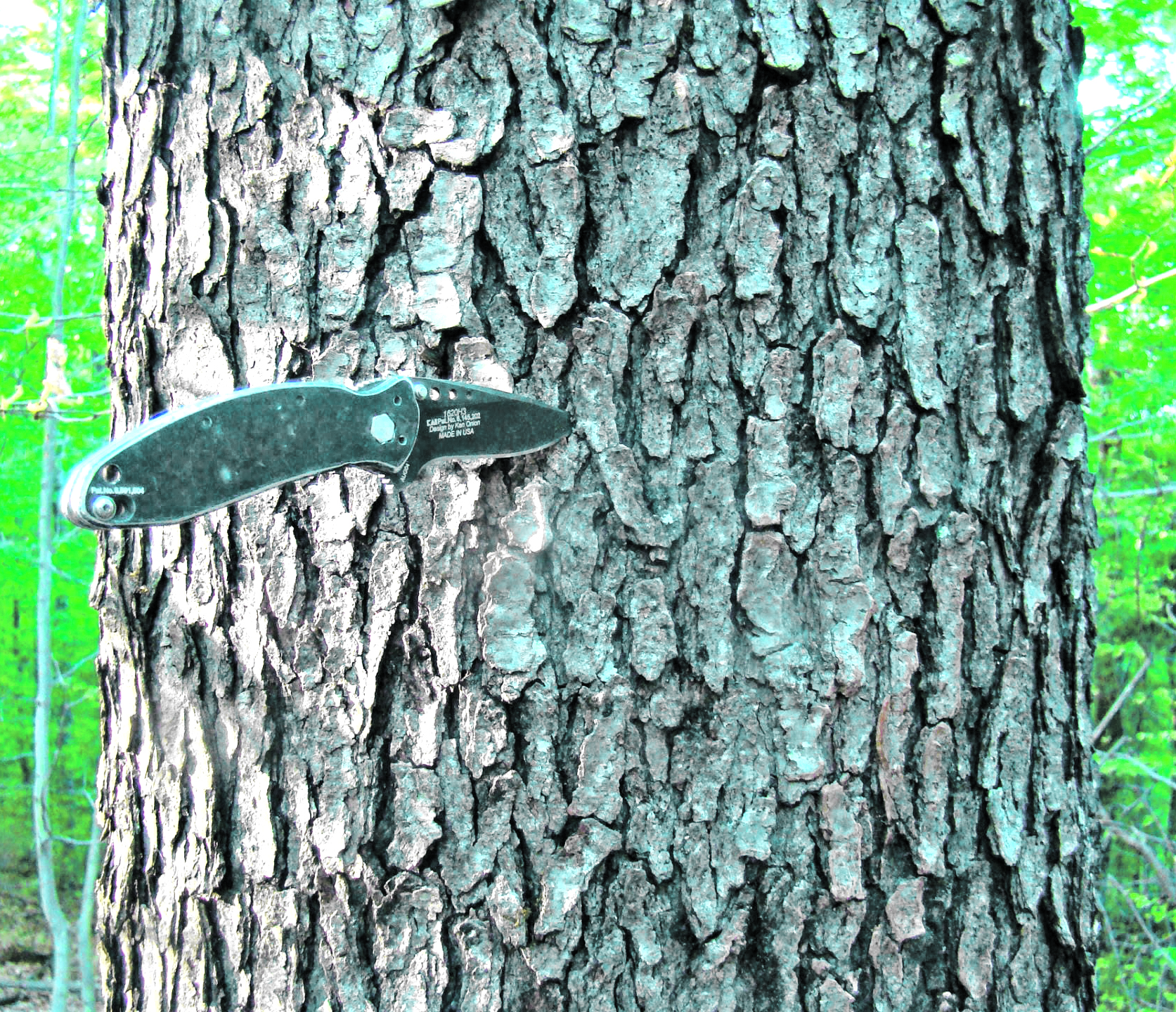
Figure 7: The bark of black cherry is described as “burnt potato chips” given the black plates.
- Ridge and furrowed – Imagine a freshly furrowed farm field, where the furrows and ridges interlace. This is the pattern for genera or species such as ash, walnut, basswood, hickory, black locust (Robinia pseudoacacia), and red oak (Quercus rubra). The differences among the species are based on the stiffness of the bark, thickness of the ridge, width of the ridge, the shape of the ridge, the color in the furrows, texture within the furrows, and the inner color of the ridges.
- Plates – Plates are a broad category that I include here to mean flat pieces of bark with edges. The classic plate bark is that of cherry (Figure 7). Other plates may be elongated, such as sugar maple (Acer saccharum) and red maple (A. rubrum). Some plates are variable on the same tree, for example white oak (Q. alba) can have thin overlapping plates, or coarse blocky plates (Figure 8).
Figure 8: White oak bark is highly variable. This picture shows overlapping plates on the upper portion of the stem, and blocks or thick plates on the lower section.
- Smooth – Most species have smooth bark when young. These young specimens can be differentiated, often by color, texture or a variety of other structures such as lenticels or branch scars. Few trees have smooth bark when mature, but those include American beech (Fagus grandifolia), tree of heaven (Ailanthus altissima), and pin cherry (Prunus pensylvanica) albeit with prominent lenticels. Mature yellow birch (Betula alleghaniensis) and paper birch (B. papyrifera) might be considered as smooth but exfoliating, or conversely having thin plates that curl at the edge. The bark of yellow and paper birch become very coarse as the trees attain significant age.
Site – It is worth mentioning site conditions because this can aid in differentiating two closely related species within a genus. However, a species is usually common to a site because it is most competitive there, but it can occur on other sites. For example, green ash (Fraxinus pennsylvanica) is most common on moist and riparian soils, and white ash (F. americana) is most common on more upland, though seldom dry soils. Some of the hickories are more common on moist or on dry sites. Finally, there are occasions where you’ll find a species growing off-site that may change features; I recall a yellow-popular (Liriodendron tulipifera), which is common on moist fertile soil, growing on a dry infertile site and had unusually coarse bark, yet typical buds and twigs.
Habit – The final feature is growth habit, which is the architecture of the crown. Habit is of infrequent use, but of interesting notoriety for some species. The classic example of habit is the vase-like form of American elm (Ulmus americana). Other features of habit that might help include persistent lower branches on pin oak (Q. palustris), opposite branches on the maples, ashes and dogwoods, and coarse branches on ashes, bur oak (Q. macrocarpa) and Kentucky coffeetree (Gymnocladus dioicus)
There are several terms in this article that I thought I remembered, but needed to confirm. I am grateful to have access to the Trees of New York – Native and Naturalized by Donald J. Leopold of SUNY ESF. This is an exceptional book (my “go to“ book) for its details of descriptions, pictures and line drawings. The current version is of coffee-table quality, but I’m told the next edition will be paperback and suitable for use in the field. A book with good line drawings and the fifty most common trees of New York is the Cornell Cooperative Extension book, Know Your Trees, available online at: https://bit.ly/2BWz2WI-know-your-trees. For information to order a hard copy email: cce-nat-res@cornell.edu.


